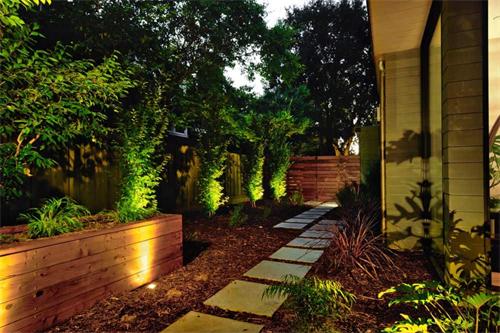
Before delving into the details, here’s a quick overview: thoughtfully designed garden lighting not only extends your outdoor living space beyond sunset but also enhances safety, highlights focal points, and cultivates a captivating ambiance. By layering ambient, task, and accent lights, you can create depth and visual interest, while choosing energy-efficient fixtures—such as LEDs and solar-powered lights—keeps operating costs and environmental impact low. Accent lighting techniques like uplighting trees or well-lights add drama, and clever placement along pathways ensures both beauty and function. With a little planning and regular maintenance, your garden can become a magical retreat after dark—inviting you and your guests to linger long into the evening.
Why Light Matters?
Well-designed landscape lighting can extend your outdoor living space, allowing you to entertain, dine, or simply relax in your garden long after the sun goes down. Beyond aesthetics, lighting pathways and steps improves safety by reducing trip hazards and guiding guests through your landscape. Strategically placed lights also enhance security, deterring intruders and illuminating dark corners where unwanted visitors might lurk.
Layering for Luminous Landscapes
A foundational principle in garden lighting design is layering—combining ambient, task, and accent fixtures to balance function and mood. Ambient lighting provides general, overall illumination (think string lights draped across a pergola), task lighting focuses on specific areas where activities take place (such as work lights near a grilling station), and accent lighting draws the eye to architectural features, statues, or specimen plants. When these layers are harmonized, the result is a dynamic, three-dimensional space that feels both safe and enchanting.
Choosing Your Fixtures
Solar-Powered Lights. Solar fixtures are eco-friendly and simple to install—no wiring needed—and many models automatically turn on at dusk. Products like durable pathway markers or decorative string lights offer both affordability and low maintenance, making them ideal for DIY enthusiasts.
LED Lighting. LEDs consume up to 80% less energy than incandescent bulbs and have long lifespans, reducing replacement frequency. Available in various color temperatures, they can mimic the warm glow of traditional lights or deliver crisp, modern tones.
Specialty Fixtures. Motion-sensor lights boost security, while spotlights and well-lights spotlight trees and sculpture bases for dramatic effect. Bollard lights and hanging lanterns add architectural interest, and recessed step lights maintain clean sightlines while illuminating elevation changes.
Accent lighting transforms garden elements into focal points. Uplights placed at the base of trees or architectural columns cast striking shadows and reveal texture in bark or stone. Well-lights set flush with the ground can subtly wash light across walls or hedges, creating an ethereal backdrop.
Planning and Maintenance: Long-Term Glow
Thoughtful placement is key: position path lights 8–10 feet apart to maintain consistent illumination, and angle accent lights at 30–45 degrees from the object for optimal coverage without glare. For solar lighting, ensure panels receive at least 6–8 hours of sunlight daily and clean them seasonally to prevent dust buildup and maximize charging efficiency. Inspect wired fixtures annually for corrosion or loose connections, and replace bulbs or batteries promptly to keep your system performing at its best.
To bring everything together, start by sketching your garden’s layout and noting seating areas, pathways, and standout features. Layer ambient lights for general glow, task lights for functional zones, and accent lights to sculpt your landscape’s highlights. Experiment with dimmers and color-tunable LEDs to adjust mood on the fly. Finally, incorporate decorative elements—like string lights over a patio or lanterns hanging from branches—to add personality and warmth.
Recommend:

Best Florence in One Day Itinerary for 2024: How to See the Most in 24 Hours

Iconic Luxury: Inside the Ritz-Carlton Experience

What is the best age for children to wear braces?

A quick nap is good for your brain

